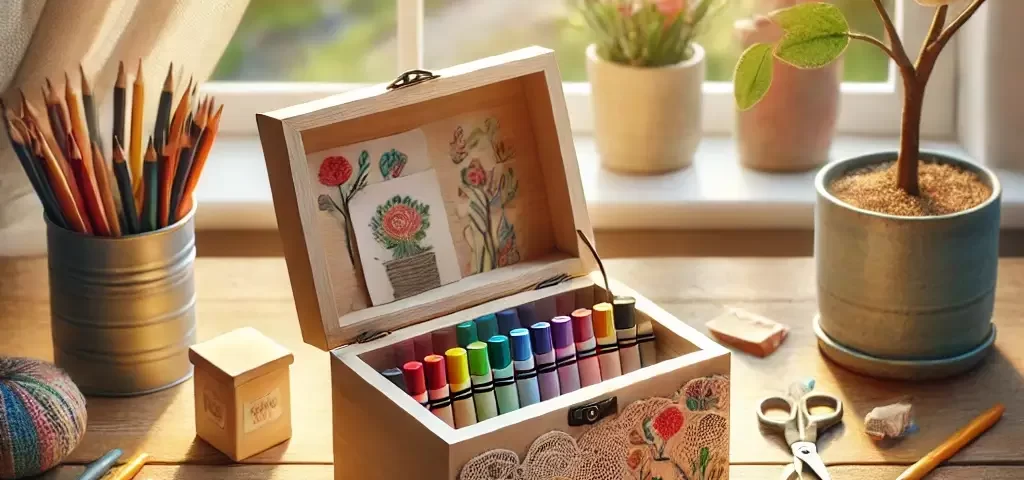Helping Children Memorialize Loved Ones

Therapy for Grieving Children
January 5, 2025
Impact of Losing a Parent on Children
January 5, 2025Children grieve differently and ways of expression also differ from those of grownups. Children between 6-12 years of age are considered more vulnerable, their maturity of thoughts allows them to understand the concept of death, whereas immaturity renders them unable to cope with the situation. They might not measure how big of deal death is or express their feelings in words and will need guidance to do so properly, guidance needs to start right from death of the loved one, parents must explain to their child that loved is no longer with us, in a simple but understanding way, to learn more about this make sure to check out “How to convey a death in the family to a child”. After this, the best way to help children with loss is by encouraging them to remember and celebrate loved ones through some meaningful activities. Memorializing loved ones can help the kid process emotions and preserve positive memories of a person that passed away.
Why Memorializing Loved Ones Matters for Children
Memorializing loved ones provides an opportunity for children to feel safe while processing their feelings. Creative remembering activities can help children deal with loss because they can express their emotions and memories in a comfortable manner. Activities such as building souvenirs or participating in rituals may foster emotional healing for the child and provide comforting reminders of loved ones.
Bereaved children who have taken part in memory activities might experience a deeper connection with the dead. Furthermore, memorialization helps the child in maintaining a bond with the deceased that is very much needed for the child’s emotional fulfillment. While doing such activities they will be able to see grief as part of life and turn the situation from sorrow to love and remembrance. Ultimately, the activities not only help children with loss but give them tools for later in life.
Creative Ways to Help Children Memorialize Loved Ones
Memory Boxes or Scrapbooks
One of the easiest, most appropriate and useful ways to help children with loss is to provide memory boxes or scrapbooks, in which the children may gather photos, notes, and souvenirs of all varieties that remind them of their loved one. Making the memory box highly personal, a child may decorate it with drawings, stickers, or favorite colors of the loved one. Such tangible reminders give children a place to go when they need to replay their memories in a secure environment.
Art and Craft Activities
Art is a strong fix to the problem that lets children express their feelings of grief. Drawing, painting, or crafting are all great activities that are helpful and have become ways to honor loved ones in a very creative manner. For instance, children can paint rocks with special messages, design greeting cards for loved ones, or make family trees celebrating the lives of loved ones who have passed. Projects like these have the potential to help children with loss in a personal and self exploring way.
Planting a Memorial Garden
Planting a garden is a beautiful way to help children with loss. One might have flowers, trees, or even small plants that indicate growth, renewal, and cherished memories. For younger children, this activity offers a hands on way to contribute to something positive and lasting. Each time the garden blooms, it is like a living honor to their loved one.
Writing Letters or Stories
One of the best ways to help kids with the processing of their feelings is if children are encouraged to write letters or stories about their loved ones. Writing a letter to a loved one, journaling favorite memories, or creating a story hinged on their relationship, all this might be a way for them to explore their feelings. This would be especially effective in the case of children who have difficulties in expressing themselves vocally, thus helping the children with loss.
Creating a Tribute Video or Playlist
Technology provides new ways to help children with loss. A memorial video, created from pictures, voice recordings, or music lists, can remind the children of their loved one. A child may create a playlist of songs their loved one enjoyed or a happy moment video montage. These digital remembrances can be replayed at any time to assure memories are kept alive and as clear as possible.
Tips for Parents and Caregivers
Involving Children in the Process
One very important aspect when supporting a bereaved child is memorialization. The children must be allowed to make choices about how they would like to remember the loved one, which empowers them and it becomes a meaningful experience. Whether it is planting a tree, making a scrapbook, or simply talking about the person, having a choice and doing so is key in helping children with loss.

Providing Emotional Support
Children cannot work their way through difficult feelings about death without assistance. Parents and caregivers can offer an appropriate place for children to experience and express themselves with no judgments. Reassurance and the much needed listening to the kid are vital for helping children with loss. Encourage conversations, and let them know it’s okay to be sad or angry or confused, if you need more help to comfort the children we recommend reading the article provided by HonorYou “Helping your Chuld Cope After a Loved One Passes Away”.
FAQs
1. What are simple ways for young children to remember a loved one?
Drawing pictures, making a memory box, or planting a flower can be simple concrete activities that help children with loss because these provide them with something physical to remember their loved ones. The activities themselves are simple and allow the child to express themselves.
2. Why is memorializing important for grieving children?
Memorializing is helpful, it aids children in order to cope with their loss, remember their loved one, and retain positive memories. These activities therefore help children with loss by offering emotional healing.
3. How can I involve my child in creating a memorial without overwhelming them?
Start off by asking your child what they would like to do by giving very simple options. Activities should be appropriate for his age and limited to those activities that feel natural and comforting for him. The key is to help children with loss without adding extra stress.
4. Are there any virtual tools for children to honor loved ones?
Yes, there are online tools such as creating memorial web pages, creating online memory scrapbooks, or making tribute videos. Such methods help children with loss by using technology to preserve the memories in a very modern manner.
5. How to help children cope with loss?
In order to help children with loss, be supportive emotionally, communicate openly, and engage them in some form of meaningful remembrance activity. Be patient and understanding as they process their feelings and seek professional help if necessary.
6. What is the grief circle for kids?
A grief circle is a support group designed to help children with loss. It provides a safe environment where children are free to share their feelings, listen to others, and learn to cope. Often, grief circles entail activities and discussions that promote recovery and bonding.


